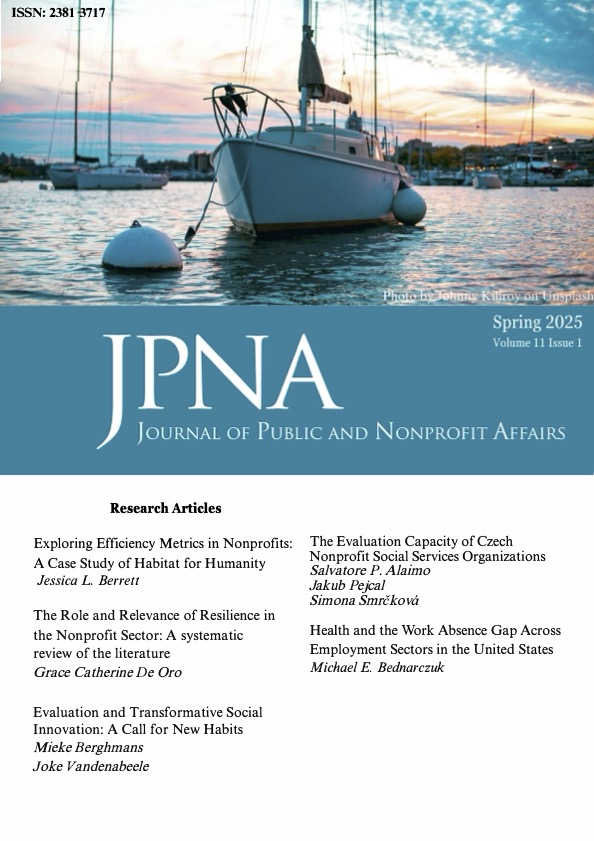Exploring Efficiency Metrics in Nonprofits: A Case Study of Habitat for Humanity
DOI:
https://doi.org/10.20899/jpna.g0199p91Keywords:
nonprofit efficiency, normative measures, instrumental measures, Habitat for HumanityAbstract
This exploratory case study examines nonprofit efficiency by interviewing 36 leaders from Habitat for Humanity affiliates across diverse geographic locations in the United States, focusing on understanding efficiency from a practitioner’s perspective. Habitat for Humanity, composed of numerous nonprofits dedicated to housing, provided a rich context for this investigation. The study finds that while nonprofit practitioners use a diverse array of metrics to assess efficiency, many of these metrics do not accurately measure it, indicating a need for greater education around efficiency measurement. Additionally, the metrics cover diverse organizational areas, highlighting the importance of a multidimensional approach to efficiency assessment. The study suggests that aligning scholarly methods with practitioner needs and promoting a broader understanding of efficiency across multiple organizational dimensions could improve both theoretical and practical applications in nonprofit management.
Downloads
Published
Issue
Section
License
Authors who publish with this journal agree to the following terms:
- Authors retain copyright and grant the journal right of first publication with the work simultaneously licensed under a Creative Commons Attribution License that allows others to share the work with an acknowledgment of the work's authorship and initial publication in this journal.
- Authors are able to enter into separate, additional, contractual arrangements for the non-exclusive distribution of the journal's published version of the work (e.g., post it to an institutional repository or publish it in a book), with an acknowledgment of its initial publication in this journal.
- Authors are permitted and encouraged to post their work online (e.g., in institutional repositories or on their website) prior to and during the submission process, as it can lead to productive exchanges, as well as earlier and greater citation of published work (see, The Effect of Open Access).







